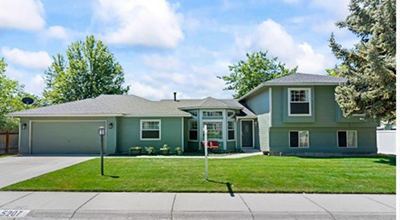
3Q Home Flipping Declines Across U.S.; Investor Profits at 13-Year Low

ATTOM, Irvine, Calif., said third quarter home flipping activity fell from the second quarter, and investor profits fell to their lowest level since 2009.
However, the company’s third-quarter U.S. Home Flipping Report noted home flipping remained higher than from a year ago and stood as the third-highest rate in the past decade.
The report showed 92,422 single-family houses and condominiums flipped in the third quarter, representing 7.5 percent of all home sales in the third quarter, or one in 13 transactions. This was down from 8.2 percent during the second quarter, but improved from 5.9 percent a year ago.
Despite the decline, the home-flipping rate during the third quarter of this year still stood at the third-highest level in the past decade, below the high point of 9.7 percent registered in the first quarter.
“This is a classic good news/bad news report for fix-and-flip investors,” said Rick Sharga, executive vice president of market intelligence with ATTOM. “While flipping activity in the third quarter was among the highest on record, gross profits and profit margins declined significantly, reflecting the overall pricing weakness in today’s housing market.”
The report shows that as home selling by investors decreased, typical gross profits on those deals also dropped in the third quarter, hitting their lowest point in nearly three years. With the national housing-market boom stalling, gross flipping profits declined in the third quarter as well at the fastest quarterly pace since 2009. Profit margins on flips also fell precipitously during the third quarter, to a point not seen in 13 years.
Among all flips nationwide, the gross profit on typical transactions (the difference between the median purchase price paid by investors and the median resale price) decreased to $62,000 in the third quarter, down 18.4 percent from $76,000 in the second quarter and down 11.4 percent from $70,000 a year ago. The latest profit figure stood at the lowest point since fourth quarter 2019, while the quarterly rate of decline marked the worst since early 2009.
Typical profit margins, meanwhile, sank during the third quarter after rising in the prior two quarters. The typical gross-flipping profit of $62,000 in the third quarter translated into a 25 percent return on investment compared to the original acquisition price. That was down from 30.2 percent in the second quarter and from 31.8 percent a year earlier. The typical third-quarter return on investment slumped to the lowest point since 2009 and was less than half the peak over the past decade of 53.1 percent in late 2016.
ATTOM said so large was the fall in the third-quarter that typical returns were less than 25 percent in nearly half the metropolitan areas around the nation with enough data to analyze, compared to just a third of them earlier in 2022.
The report said profit margins worsened in the third quarter as median resale prices on flipped homes declined faster than they had previously when investors were buying homes. The typical resale price on flipped homes declined to $310,000. That was down 5.5 percent from $328,000 in the second quarter 022, although still up 6.9 percent from $290,000 a year earlier.
The quarterly drop-off in median resale values was worse than the 1.6 percent decline in prices that recent home flippers were commonly seeing when they originally bought their properties. The price-change gap between buying and selling resulted in profit margins going down from the second to the third quarter.
Sharga said the third-quarter woes for home flippers added to the growing list of signals that the nation’s decade-long housing market boom is over – or has at least stalled – after nearly tripling home values and sending profits and equity soaring.
“It’s apparent that fix-and-flip investors aren’t immune to the shifting conditions in the housing market,” Sharga said. “With demand from buyers weakening, prices trending down over the past few months, and financing rates significantly higher than they were at the beginning of the year, flippers face a much more difficult environment today, and probably will in 2023 as well.”
